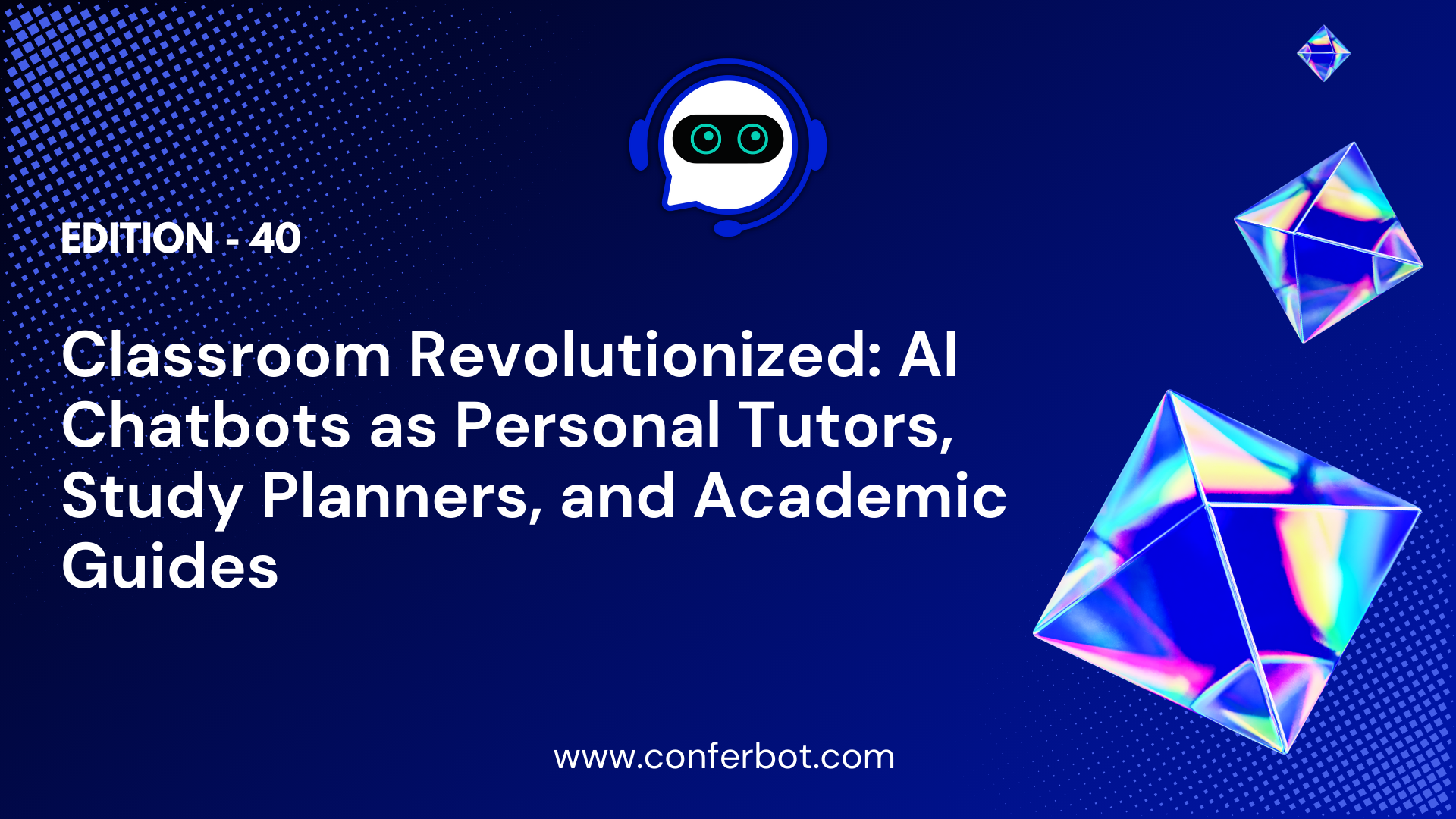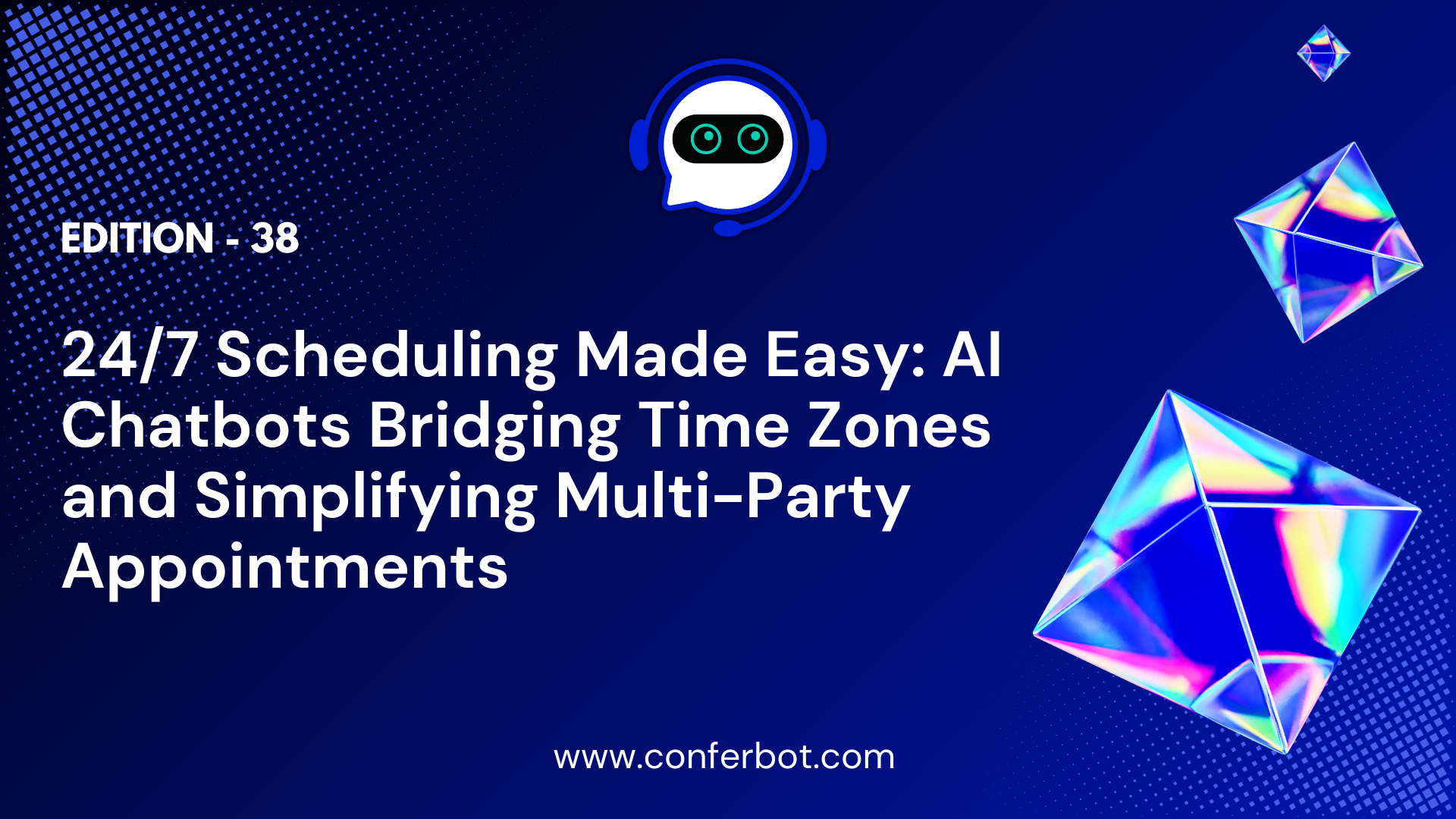
AI Chatbots in the Arts and Culture Sector: Enhancing Audience Engagement, Creativity, and Accessibility
Discover how AI chatbots are revolutionizing the arts and culture sector, enhancing audience engagement, fostering creativity, and promoting accessibility in our latest Insights on Chatbots & AI edition.

Welcome to the seventeenth edition of Insights on Chatbots & AI, where we explore the transformative impact of AI chatbots in the arts and culture sector. This issue delves into how these intelligent systems are revolutionizing the way cultural institutions engage with audiences, foster creativity, and improve accessibility. Discover how AI chatbots are not only enhancing the visitor experience but also opening up new avenues for artistic expression and cultural participation. AI chatbots are increasingly being adopted by museums, galleries, theaters, and other cultural institutions to provide immersive and interactive experiences for visitors. These intelligent conversational agents serve as virtual guides, offering personalized recommendations, answering queries, and providing in-depth information about exhibitions, performances, and cultural events. One of the key advantages of AI chatbots in audience engagement is their ability to offer tailored content based on a visitor's interests, preferences, and level of knowledge. By asking questions and analyzing user responses, chatbots can curate customized journeys through cultural spaces, highlighting exhibits or performances that align with an individual's tastes and curiosities. This personalized approach not only enhances the visitor experience but also encourages deeper engagement with the cultural material. AI chatbots also enable cultural institutions to extend their reach beyond physical spaces and engage with audiences online. Through social media platforms, websites, and mobile apps, chatbots can provide virtual tours, behind-the-scenes glimpses, and interactive educational content. This digital engagement strategy allows cultural organizations to connect with new audiences, particularly younger demographics who are more accustomed to interacting with technology. The conversational nature of AI chatbots makes them powerful tools for storytelling and narrative exploration. They can guide visitors through complex cultural concepts, historical events, or artistic movements in a way that is engaging, accessible, and memorable. By weaving together information, anecdotes, and multimedia content, chatbots create immersive experiences that bring cultural material to life and foster a deeper understanding and appreciation of the arts. Moreover, AI chatbots can play a crucial role in gathering audience feedback and insights. By engaging visitors in conversations and soliciting their opinions, chatbots can collect valuable data on audience preferences, satisfaction levels, and areas for improvement. This real-time feedback allows cultural institutions to adapt their offerings, tailor their marketing strategies, and create more relevant and engaging experiences for their audiences. The potential for AI chatbots to transform audience engagement extends beyond the walls of traditional cultural institutions. These intelligent systems can also be deployed in public spaces, such as parks, city squares, and street art installations, to provide interactive and educational experiences for passersby. By bringing culture and the arts into the public realm, chatbots help democratize access to cultural resources and foster a more vibrant and inclusive urban environment. In addition to enhancing audience engagement, AI chatbots are also being used to foster creativity and artistic expression. By providing artists with new tools and platforms for experimentation, chatbots are opening up exciting possibilities for interactive and generative art. One way in which AI chatbots are being used in artistic practice is through the creation of conversational artworks. These interactive pieces allow audiences to engage in dialogue with the artwork itself, shaping the narrative and the overall experience through their conversations with the chatbot. This participatory approach blurs the line between artist and audience, inviting viewers to become co-creators in the artistic process. AI chatbots are also being used to generate new forms of creative content, such as poetry, music, and visual art. By training chatbots on vast datasets of artistic works, developers can create algorithms that mimic the style and aesthetics of particular artists, genres, or movements. These generative chatbots can produce novel and surprising outputs, sparking new ideas and inspiring human artists to push the boundaries of their creative practice. In the realm of performance art, AI chatbots are being used to create immersive and interactive theater experiences. By integrating chatbots into the narrative structure of a play or performance, artists can create dynamic and responsive stories that adapt to the audience's choices and reactions. This interactive approach engages audiences in a more meaningful and memorable way, making them active participants in the unfolding drama. Moreover, AI chatbots can serve as creative collaborators for artists, providing them with new sources of inspiration and feedback. By engaging in conversations with chatbots trained on diverse artistic styles and techniques, artists can explore new ideas, challenge their assumptions, and refine their creative vision. This collaborative approach between human and machine intelligence has the potential to generate innovative and groundbreaking works of art. One of the most significant benefits of AI chatbots in the arts and culture sector is their ability to enhance accessibility and inclusivity. By providing alternative ways to engage with cultural material, chatbots can break down barriers and ensure that the arts are accessible to all, regardless of physical, cognitive, or linguistic abilities. For individuals with visual impairments, AI chatbots can provide audio descriptions of artworks, exhibitions, and performances, allowing them to experience and appreciate cultural content in a meaningful way. These verbal descriptions can be tailored to the individual's preferences and level of detail, providing a personalized and engaging experience. Similarly, for individuals with hearing impairments, chatbots can provide text-based translations of audio content, such as museum tours, lectures, or theatrical performances. By converting spoken words into written text in real-time, chatbots ensure that individuals with hearing impairments can fully participate in cultural experiences and access the same information as their hearing counterparts. AI chatbots can also assist individuals with mobility challenges by providing virtual access to cultural spaces and events. Through immersive 360-degree tours, live-streamed performances, and interactive online exhibits, chatbots can bring the arts and culture directly to individuals who may not be able to physically visit cultural institutions. This virtual accessibility opens up new opportunities for cultural participation and helps create a more inclusive and equitable cultural landscape. In addition to physical accessibility, AI chatbots can also enhance linguistic and cultural accessibility. By offering multilingual support and cultural context, chatbots can help break down language barriers and provide a welcoming and inclusive experience for diverse audiences. This is particularly valuable in an increasingly globalized world, where cultural institutions must cater to visitors from a wide range of linguistic and cultural backgrounds. Moreover, AI chatbots can play a role in promoting diversity and representation within the arts and culture sector. By showcasing the works and stories of underrepresented artists and communities, chatbots can help amplify marginalized voices and foster a more inclusive cultural narrative. This can be achieved through targeted recommendations, curated collections, and interactive storytelling that celebrates the richness and diversity of human creative expression. Conferbot is at the forefront of integrating AI chatbots into the arts and culture sector, designing innovative solutions that enhance audience engagement, foster creativity, and promote accessibility. Conferbot's chatbots are equipped with state-of-the-art natural language processing and machine learning capabilities, allowing them to understand and respond to user queries in a natural and intuitive way. One of Conferbot's flagship offerings is their "CultureBot" platform, which provides cultural institutions with a comprehensive suite of tools for creating and deploying AI chatbots. The platform includes pre-built templates for common use cases, such as virtual tours, exhibition guides, and educational resources, as well as customization options for tailoring the chatbot to the specific needs and branding of each institution. Conferbot's CultureBot chatbots are designed with accessibility and inclusivity in mind. They offer multilingual support, audio descriptions, and text-based translations to ensure that cultural experiences are accessible to all. The chatbots are also optimized for use on a wide range of devices, from smartphones and tablets to assistive technologies like screen readers and braille displays. In addition to their audience engagement solutions, Conferbot also offers specialized chatbots for artists and creatives. These chatbots provide tools for collaboration, feedback, and inspiration, helping artists to push the boundaries of their creative practice and explore new forms of expression. Conferbot's generative chatbots, trained on vast datasets of artistic works, can produce novel and surprising outputs that spark new ideas and inspire human artists. Conferbot's commitment to innovation and accessibility in the arts and culture sector has earned them recognition and partnerships with leading cultural institutions around the world. Their chatbots have been deployed in museums, galleries, theaters, and public spaces, transforming the way audiences engage with and experience the arts. This edition of Insights on Chatbots & AI highlights the transformative potential of AI chatbots in the arts and culture sector. From enhancing audience engagement and fostering creativity to promoting accessibility and inclusivity, these intelligent systems are reshaping the cultural landscape in profound and exciting ways. As cultural institutions seek to adapt to the challenges and opportunities of the digital age, AI chatbots offer a powerful tool for connecting with audiences, telling stories, and creating immersive and interactive experiences. By leveraging the capabilities of these intelligent systems, cultural organizations can reach new audiences, inspire creative expression, and ensure that the arts are accessible and relevant to all. However, the integration of AI chatbots into the arts and culture sector also raises important questions and challenges. As with any technological innovation, it is crucial to consider the ethical implications and potential unintended consequences of these systems. Cultural institutions must ensure that the use of AI chatbots aligns with their values and mission, and that these technologies are developed and deployed in a responsible and transparent manner. Moreover, while AI chatbots can enhance and complement human creativity, it is important to recognize that they are not a substitute for the unique perspective and emotional depth that human artists bring to their work. The most successful applications of AI in the arts and culture sector will likely be those that leverage the strengths of both human and machine intelligence, creating new forms of collaboration and expression. As we look to the future, the possibilities for AI chatbots in the arts and culture sector are vast and exciting. From virtual museums and interactive public art installations to generative music and immersive theater experiences, these technologies have the potential to transform the way we create, experience, and appreciate the arts. By embracing the power of AI chatbots and working to ensure their responsible and equitable deployment, we can create a more vibrant, inclusive, and accessible cultural landscape for all.Introduction
Transforming Audience Engagement
Fostering Creativity and Artistic Expression
Enhancing Accessibility and Inclusivity
Spotlight on Conferbot: Pioneering AI-Driven Solutions for Arts and Culture
Conclusion
Tags :
human-handover node live-support chatbot-to-human customer service automation free chatbot advanced customer support personalized service conferbot guide enhance customer service tech tutorials chatbot technology no-code chatbots direct communication
The Conferbot Team
About AuthorHi there! I'm Conferbot, a simple and powerful tool that enables you to create chatbots for your website in minutes.
Try me out and see how I can help make your work life easier, just like I have for 10k+ satisfied users worldwide.


